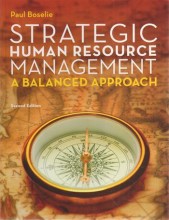Financial Statement Analysis - The Annual report
17 important questions on Financial Statement Analysis - The Annual report
What are the annual report fiancial statements that are important for this yearly thing?
2. The income statement
3. The statement of cash flows
What is represented in the annual report?
- Statement of financial position
- Income statement
- Statement of cash flows.
What does the fianncical statment of position or balance sheet provide
A snapshot of the firm. It is a convenient means of organizing and summarizing what a firm owns (its assets), what the firm owes (its liabilities), and the difference between the two (the firm’s equity) at a given point in time
- Higher grades + faster learning
- Never study anything twice
- 100% sure, 100% understanding
What are two kinds of users of financial statements?
- Internal stakeholders: the information will be used to plan and help managers make financial decisions.
- The financial reports are called management accounts. These don’t need to follow a standard format.
- The information will be forward-looking.
- External stakeholders: for legal requirements will financial information be released.
- The financial reports are financial accounts and must be made according to a standard format.
- The information is backwards looking.
What can be found on the asset side of the balance sheet?
on-current assets: is one that has a relatively long life (greater than 12 months) and can be tangible (truck) or intangible (trademark)
What can be found on the liabilities and owners' equity side?
on-current liabilities: A debt that is not due in the coming year. Also loan that firm will pay off in 5 years (bond, bondholders)
What are two classes of assets?
- Current: a life of less than 1 year and will be converted into cash within this period
- Non-current: a life of longer than 1 year. These can be:
- Tangible: i.e. inventory
- Intangible: i.e. trademarkt or patents
What is the shareholders' equity? Also called ordinary equity or owners' equity?
What are two kinds of liabilities?
- Current: life of less than 1 year; it has to be paid within the year.
- Non-current: life is longer than 1 year.
Explain the 2 International Accounting Standards (IAS) presentations:
Revaluation model (fair value): which presents an asset’s value as what it is worth in the market today
What is International Accounting Standards (IAS)
How are assets showed according to IAS?
1. Historical cost model represents the value the firm has paid for them;
- Basically the book value of an asset.
- It is focused on the past.
2. Revaluation model represents the fair value amount. That’s the current value at the market at that day.
- So, it basically is the market value of an asset.
- It’s focused on the future.
What does the income statment do?
What are the parts of the income statement?
Subsequent
parts include, among other things, financing expenses such as interest paid.
Taxes paid are reported separately. The last item is net income (the so-called bottom line).
Net income is often expressed on a per-share basis and
called earnings per share (EPS).
What is primary reason a accounting income differs from cashflow is that an income statement contains:
What is cash flow from financing activities?
What is cash flow from investing activities?
The question on the page originate from the summary of the following study material:
- A unique study and practice tool
- Never study anything twice again
- Get the grades you hope for
- 100% sure, 100% understanding































